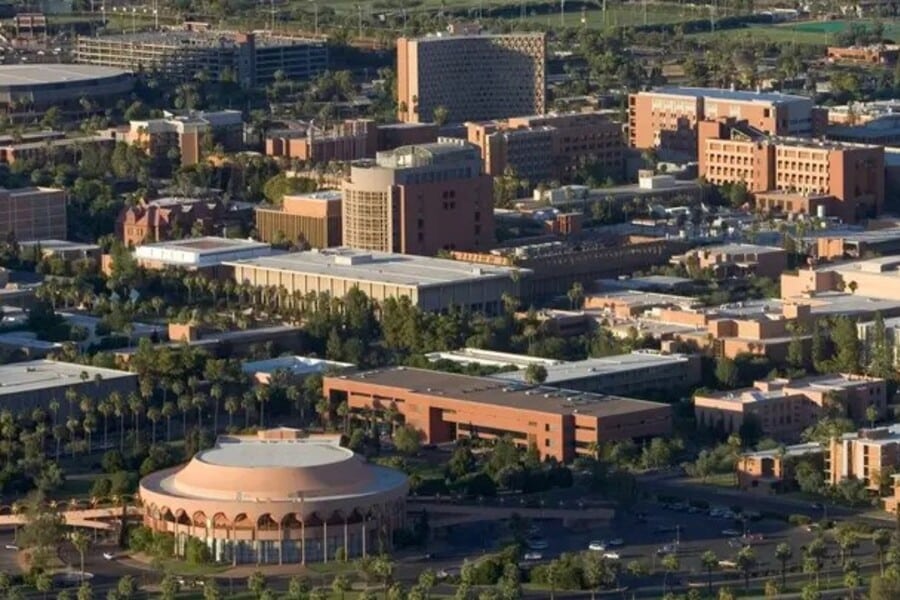
As students return to full-time, on-campus education post-pandemic, crime rates on college campuses have surged to figures reminiscent of pre-COVID times, as highlighted by recent federal data.
This alarming rise in incidents, including thefts, assaults, and sexual violence, has rekindled fears among the student body and concern among their parents, pressing educational institutions to critically evaluate and enhance their security measures.
This uptick in crime is provoking widespread debate over the adequacy and effectiveness of current campus safety strategies. Institutions are now faced with the dual challenge of bolstering their safety protocols while maintaining an open and inviting campus atmosphere.
This scenario has also stimulated a more robust dialogue between students, parents, faculty, and law enforcement on finding balanced and effective solutions to mitigate these risks and ensure the safety of all campus-goers.
This pressing issue calls for a concerted effort to reassess existing security policies and adapt them to the evolving dynamics of campus life in the post-pandemic era.
Statistics Show A Disturbing Trend
The federal government’s data from 2022 highlights a troubling rise in criminal activities in nearly 6,000 higher education institutions across the United States.
With 38,303 incidents reported last year, there’s an evident spike of about 80% compared to 21,200 incidents in 2020, and slightly higher than the pre-pandemic figures in 2019.
This marks the most considerable increase in campus crimes since colleges that receive federal funding began reporting their safety statistics under the Clery Act.
Sexual assaults, violent offenses, and property crimes top the list, with notable incidents at large universities. For example, Arizona State University reported three sexual assaults by a stranger on the Tempe campus in just 30 minutes, described by the institution as “an isolated incident.” However, these events are part of a broader national trend rather than isolated anomalies.
Experts Weigh In
Daniel Carter, President of Safety Advisors for Educational Campuses, points out that the numbers, while stark, follow a decade-long fluctuation in reported crimes. “Post-2006 saw a decline, but the numbers stabilized over the past decade, with significant dips during the peak of online-only classes,” Carter explains. He suggests the recent surge could be attributed to the increased presence and reporting on campuses rather than a decline in overall safety.
Further complicating the landscape is the sharp rise in motor vehicle thefts, which more than doubled from 2019 and represented over a quarter of all crimes reported in 2022. Carter is skeptical of this spike, suggesting changes in reporting requirements and increased awareness of what constitutes a motor vehicle — including scooters and golf carts — as potential factors.
The statistics have particularly alarmed parents, catalyzing them into action. At the University of California, Berkeley, a group of parents and community allies known as SafeBears raised over $40,000 to hire private security after several high-profile incidents, including shootings and robberies near campus. This initiative, however, has met with resistance from university administrators who caution against the effectiveness and training of private security personnel.
Victoria Cole, a parent involved with SafeBears, stresses the necessity of such measures. “We can’t simply rely on university policies that don’t seem to adapt quickly enough to these increasing threats,” she says.
The group’s efforts reflect a growing trend of parental involvement in campus safety, driven by both the rise in crimes and perceived gaps in official security measures.
The resurgence of campus crimes has not only prompted individual actions like those of SafeBears but also influenced policy discussions at various levels.
Senator Bob Casey (D-PA) has pushed for bipartisan legislation aimed at increasing campus safety, which includes enhanced federal funding for security infrastructure and stricter compliance with reporting standards under the Clery Act.
Antisemitic attacks and hate crimes have also seen a sharp increase, particularly in the wake of geopolitical tensions such as the Hamas attacks on Israel.
These incidents have fueled divisive and sometimes violent confrontations on campuses, further complicating the security challenges faced by universities.
Colleges and universities are in a precarious position, balancing the need to encourage crime reporting with the need to keep safety statistics from deterring potential students.
The Clery Act mandates that institutions receiving federal funding report detailed crime statistics near their campuses, which has historically led to underreporting by some institutions to maintain their public image.
The recent scandal at Liberty University, where the institution was fined $14 million for discouraging crime reports, particularly of sexual assault, highlights the severe consequences of non-compliance. Abigail Boyer, Associate Executive Director of the Clery Center, emphasizes the importance of transparency and accountability. “Creating a culture that encourages reporting not only complies with the law but also genuinely enhances student safety,” she notes.
As crime rates on campuses climb, the responses from institutions, parents, and policymakers will likely continue to evolve. The increasing involvement of parents like those in SafeBears, coupled with legislative efforts and improved security measures, are steps toward mitigating the risks faced by students nationwide.
Moreover, the integration of more sophisticated security technologies, including enhanced surveillance and electronic monitoring, promises to play a crucial role in future campus safety strategies.
These tools, combined with traditional policing and community engagement initiatives, are expected to form the backbone of comprehensive safety plans that address both crime prevention and response.
The sharp increase in campus crimes post-pandemic has served as a wake-up call for educational institutions across the United States. It has exposed vulnerabilities in campus safety protocols and galvanized various stakeholders into action.
While the challenges are significant, the concerted efforts of parents, administrators, and policymakers offer a path forward that could redefine campus safety standards for the better. As the situation evolves, continued vigilance and adaptation will be crucial in ensuring the safety and security of college students.
The resurgence of crime in college settings is a complex issue influenced by various factors, including increased reporting, societal changes, and specific incidents that may skew perception.
Addressing this issue effectively will require a nuanced understanding of the data, proactive safety measures, and a commitment to fostering an environment where all students feel secure. With the right mix of policy, practice, and community involvement, the trend of rising campus crimes can be curbed, ensuring that higher education remains a haven for learning and personal development.





